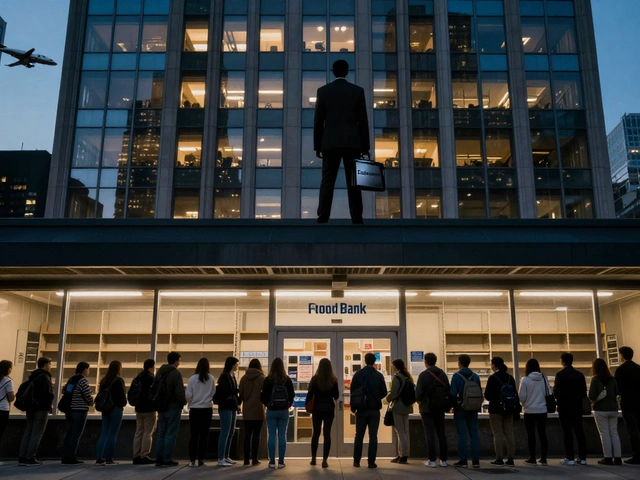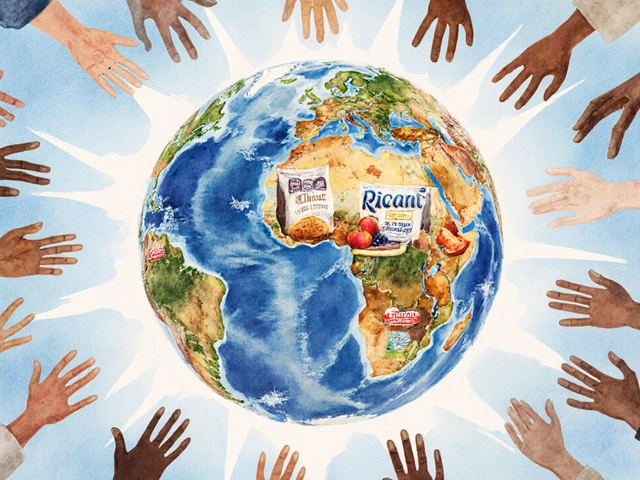You probably hear the word 'outreach' thrown around a lot. Politicians, teachers, non-profit leaders, and even influencers love using it. But ask ten people to tell you exactly what outreach is, and you'll get ten slightly different answers. Someone might say, 'It's about helping people.' Another will talk about volunteers going somewhere. One common answer? People reaching out to others, usually those who need something—a chance, a meal, maybe just a conversation. But here’s the thing: there’s so much more packed inside this word. Outreach isn’t just a buzzword or a vague idea. It’s actually a focused process with a real goal, and it’s changed people’s lives for centuries.
The Real Meaning of Outreach: Busting Myths and Clearing Up Confusion
Let’s get specific, because 'helping others' is a little too fuzzy. Think of outreach as an intentional effort to connect with people or groups who aren’t easily reached, don’t have easy access to info, services, or support, or who might feel invisible in their own communities. This goes way beyond posting a flyer or starting a group chat. It’s about taking action outside your comfort zone. If you only talk to people who already like you, that’s not outreach—that’s just hanging out.
Outreach often pops up in the context of community work—food banks, mobile clinics, school programs, job fairs for the unemployed, and even pop-up mental health counseling. Let’s say a hospital sets up a van to offer free health screenings in a low-income neighborhood. That’s outreach. Or think of a non-profit organizing volunteers to knock on doors in rural areas, making sure families know about scholarship programs their kids can use. Once, in 1985, a small Texas food pantry started delivering food boxes to homebound seniors who couldn’t get to the pantry itself. Turns out, that little experiment inspired hundreds of similar projects nationwide! Outreach sometimes means meeting people where they are—literally and emotionally.
Let’s flip the coin. There’s also digital outreach: offering resources and support through social media, video calls, or even text messages. During the pandemic, for example, education outreach had to leap online almost overnight. School counselors started texting isolated teens and offering virtual check-ins. That’s still outreach, just with tech.
The most successful outreach efforts all share three traits. First, they’re proactive—people reach out, not just wait for others to ask. Second, they’re purposeful, targeting people who need real support or info. Third, they focus on building trust. Without that, outreach is just noise or an unwelcome interruption. Real outreach is a two-way street; you’re not just giving, you’re listening.
Here’s a quick look at some common myths tied to outreach:
- Outreach is just charity handouts. (Nope. Sometimes it’s about connection, advocacy, or education, not just stuff.)
- It’s only for professionals. (So many awesome outreach programs run on the power of people like you and me.)
- You need lots of funding. (Sure, money helps. But great outreach can start with just your time and a caring attitude.)
Think about the local library that sends a van full of books to small towns without any library at all. Or a college student who starts a support group for first-generation college kids. Outreach isn’t always complex or expensive—creativity and persistence matter just as much as red tape and budgets.

Why Outreach Matters: Unpacking The Big Impact
Why bother with outreach instead of relying on folks to ask for help themselves? Not everyone knows what’s available. Lots of people feel ashamed or embarrassed to reach out. Some don’t trust institutions, thanks to previous bad experiences. Others barely have time, energy, or even an internet connection. Outreach is society’s answer to all those gaps.
Numbers tell a gripping story. According to a 2024 Pew survey, only 36% of low-income households felt confident about accessing social services without outside help. But communities with active outreach saw that number jump to 62%. That’s a massive difference.
| Type of Outreach | Typical Goal | Impact Example |
|---|---|---|
| Healthcare Outreach | Prevent disease, access to care | Florida ‘CareBus’ screened 30,000+ uninsured in 2023 |
| Educational Outreach | Inspire, inform, mentor students | LA Literacy Lab led to 40% reading score improvement |
| Mental Health Outreach | Reduce stigma, direct support | Teen Textline responded to 18,000 crisis texts in six months |
| Homeless Outreach | Connect to housing/services | Seattle street teams helped 1,100 into stable housing in one year |
There’s the visible stuff—people getting what they need and making real progress. But the impact is also invisible: stronger connections, less loneliness, new skills, higher self-confidence, and a ripple effect of hope through families. Outreach plants seeds for change that may not bloom right away, but the roots go deep.
One wild fact: according to a Harvard 2023 report, just one monthly check-in from a volunteer can lower rates of depression among homebound seniors by up to 18%. Another? Rural diabetes outreach programs cut ER visits in half over four years, all thanks to a mobile health clinic bringing blood sugar tests directly to patients who couldn’t drive to the city.
Outreach also helps break big problems into manageable steps. Suppose your city struggles with youth unemployment. Outreach might look like job skills camps, resume coaching, or after-school programs, connecting unsure teens with real work leads or internships. Without outreach, most wouldn’t even know those chances existed.
Remember, outreach isn’t a one-size-fits-all project. What works for veterans might not reach refugees. Effective outreach always starts with listening: what do people need most, and how do they want to be reached? Outreach is honest and flexible. Sometimes a plan falls flat, but a willingness to adapt and keep showing up usually wins out.
It’s impossible to list every cool outreach story, but here’s a taste from 2025: A Boston tech nonprofit retrained former inmates for IT jobs, cutting their odds of rearrest by 60%. A group of retirees in Idaho started a phone buddies project to fight elderly isolation. In Atlanta, high schoolers made TikToks explaining how to access free mental health help, netting over 50,000 views and dozens of new sign-ups for therapy.
What’s the secret sauce? Consistency. You have to keep reaching out, adjusting, and believing you’ll reach someone—even if it feels like shouting into the void at first.

How to Build Successful Outreach: Tips and Ideas That Actually Work
If you’re fired up and want to try outreach yourself, great! Here’s how real people make it work. Start with a clear goal—what do you want to change, and who do you want to reach? Be specific. The blurrier the goal, the fuzzier the results.
Next up: know your audience. Are you trying to connect with teens, seniors, immigrants, or families juggling three jobs? Imagine walking a mile in their shoes. How do they get info—texts, flyers, radio? Do they trust outsiders, or do they need to see a friendly local face? The best outreach meets people on their terms, not yours.
Keep it practical too. Sometimes, less is more. Don’t launch a million programs at once. Shoot for one focused effort and do it well. Here’s a mini checklist that works for most outreach:
- Set a realistic goal. 'Get 100 kids into after-school tutoring.' Not just ‘help teens.’
- Research your group. Find what matters most to them by asking, not guessing.
- Choose the right channel. Sometimes that’s face-to-face. Other times, a group WhatsApp chat reigns supreme. Moms living in shelters may care more about in-person meetings, while college students rarely answer email but won’t ignore a DM.
- Build trust from day one. Show up consistently and keep promises, no matter how small. Listen more than you talk.
- Ask for feedback. What’s working? What isn’t? Let people guide your effort to fit their real needs.
- Measure what matters. Don’t just count attendance—track outcomes: job offers, grades, less loneliness, new connections. Numbers tell a story about where to adjust.
Avoid perfectionism. The best outreach often starts messy. Don’t worry if things don’t pan out right away. Be honest about your mistakes and learn from them. Sometimes a plan fails, but you make a connection that leads to something even better.
Look to smart examples. During COVID, one New York City library replaced reading groups with phone sessions for people stuck at home—attendance shot up, because not everyone could do Zoom. In Detroit, a food pantry switched to text alerts about food box days, doubling the number of families who showed up. In Oregon, an environmental group sent out bilingual recycling tips by mail, boosting neighborhood participation by nearly 40%.
Tech can make your life easier, but don’t forget the power of the personal touch. Most people remember how you made them feel long after they forget the details of your program. Even just checking in to see how someone’s doing or sending a handwritten note can build trust in ways a website never will.
Be curious. Stay open. Outreach thrives on creativity—a high school student started a YouTube channel to explain financial aid in Spanish and reached thousands of families who’d missed out before. A local barbershop offered free haircuts to job hunters—suddenly, those folks started landing interviews. See a gap? Think about how you can fill it, even if it’s outside the box.
If you take one thing away, let it be this: outreach is about reaching people who might otherwise fall through the cracks. It’s about showing up, listening, offering something real, and building trust. That’s how communities grow stronger and problems get solved together. And the first step is usually a simple one—just reaching out.





